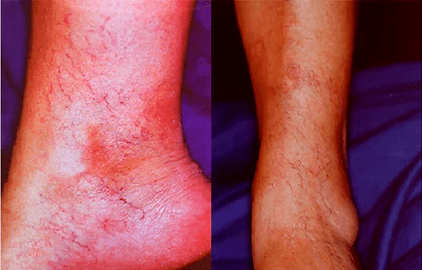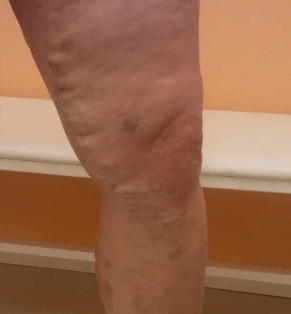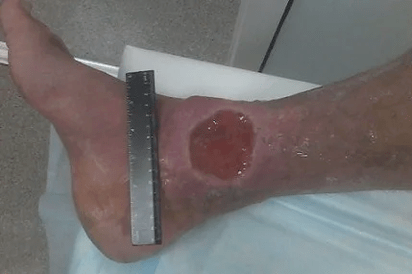
Varicose veins - This is the enlargement of the subcutaneous veins with a diameter of more than 3 mm.Varicose veins develop due to damaged functioning of venous valves and weakness of the venous wall;At the same time, the appearance of blood from the lower extremities, an increase in pressure within the vein occurs, which can lead to chronic venous insufficiency.
Sometimes, telangigiectasia and reticular veins are mistaken for varicose veins.
These are the veins with diameter 3 mm and less, they do not affect the venous outflow, but cause a clear cosmetic defect.
What is the prevalence of varicose veins?
Varicose expansion of subcutaneous veins is present in 30 % of women and 15 % of men of mature age.The prevalence of varicose veins of the lower extremities increases significantly with age and is present in most people over the age of 60.The percentage of patients with trophic disorders in adulthood is only 1.8%, while in old age the indicator reaches 20%.At the same time, every fifth patient in life faces thrombophlebitis.Among the reasons that lead to disability, the part of the forms with vein veins is more than arteries.
The main risk factors for the development of varicose veins are:
- old age
- Female
- gestation
- Hormonal disorders
- Positive family story
Additional risk factors:
- smoking
- Hypertension
- constipation
The literature for additional risk factors is contradictory.Moreover, the risk of developing venous disease is low.
How is varicose veins manifested?

The most common manifestation is the uneven dilated veins that extend over the surface.In some cases, they can barely be visible or defined only by touch, in others they get a winding -shaped shape with joint formation or in appearance resemble a large bunch of grapes.
Often varicose veins are associated with the following symptoms:
- Feeling and tension in the legs
- Pain withdrawal and/or pain along the veins
- The fast fatigue of the legs
- Itching
Rarely varicose disease can cause disturbed leg syndrome and night leg cramps.
What are the risks of progressing varicose veins?
In the absence of treatment, the progression of varicose veins can lead to chronic venous insufficiency (CVN).The presence of HVN indicates severe violations of venous lymphatic return (clinical class C3-C6 CEAP caps), which include: chronic edema (lymphedem), change of skin color (hyperpigmentation), venous eczema, skin compression, trophic venous ulcer.
What are the complications of varicose veins?
Thromboflebitis-formation of a thrombus in a surface venous system is an event that faces 20% of patients with varicose veins.Such thrombosis is associated with severe pain, redness of the skin, sealing along the vein in the lower leg and/or thigh.In the absence of treatment, thrombotic measures are possible for a deep venous system.

Deep vein thrombosis (TGV) - In most cases, the onset of the process is asymptomatic.When thrombosis is spreading to the femur segment and the pelvic vein, the main flow of blood from the lower extremities is disturbed, which is associated with severe edema and pain syndrome and estimated as a life -threatening situation.
Pulmonary artery thromboembolism (wire) - In 10% of cases, thrombotic measures in the deep veins of the lower extremities are fragmented and migrated to the pulmonary arteries with a blood flow, causing death.
What is necessary for the correct diagnosis?
Given the variety of forms of vein disease, every detail of the history of the development of the disease and the life of the patient, the presence of concomitant diseases, transactions, the result of an external examination by a physician and the most important thing is ultrasound, ultrasound, ultrasound vein scan is important to make an accurate diagnosis.The latter, today, is the most accurate and non -leading method of studying the veins of the lower extremities.
Treatment of varicose veins, the most common methods:
- Drugs-Treatment-Ilaca-Tanification of medicines have proven their effectiveness in reducing varicose vein symptoms, but they are unable to eliminate varicose veins.Pharmacotherapy is successfully used to prevent complications in risk groups, preparation preparation and post -operative rehabilitation.
- Compression - Wearing special medical clothing in the form of golf, socks, tights.In some cases, multi -layer bandages with elastic bandages of different additions and compression of hardware pneumos are used.The role of compression treatment is difficult to overestimate, it is present at almost any stage of preventing and treatment of chronic veins.
- Introduction to the vein lumen of medicines that can cause its closure.This method is a gold standard for eliminating reticular veins.It is successfully used in the treatment of varicose veins not with a large diameter and there are restrictions on the elimination of the pathological flow of the main subcutaneous veins.
- Classic - Combined phlebectomy, in modern performance is performed on outpatient basis under spinal or local anesthesia.In some cases, this is the only possible way when the target veins are very compelling and/or have high extensions.However, the method is inferior to traumatic endo traumatic procedures.
- Endo venous laser prison - A method for treating varicose veins, in which the vein is not removed, but is locked in with the laser radiation energy, which is brought directly to the wholesale vessel with a fiber.The effectiveness of the procedure is comparable to the results of surgical removal of the vein, at the same time, it is characterized by minimal trauma.Rehabilitation time is 1-3 days.
- Radio frequency prison - a progressive way to eliminate the pathological flow of blood of the subcutaneous luggage veins.This is a fully outpatient procedure performed under local anesthesia.The effectiveness of treatment corresponds to the level of classical phlebectomy, the pain syndrome is minimal or absent.The rehabilitation time is 1-2 days.












































